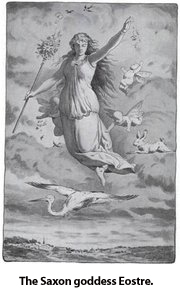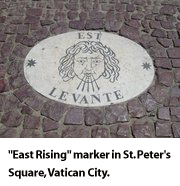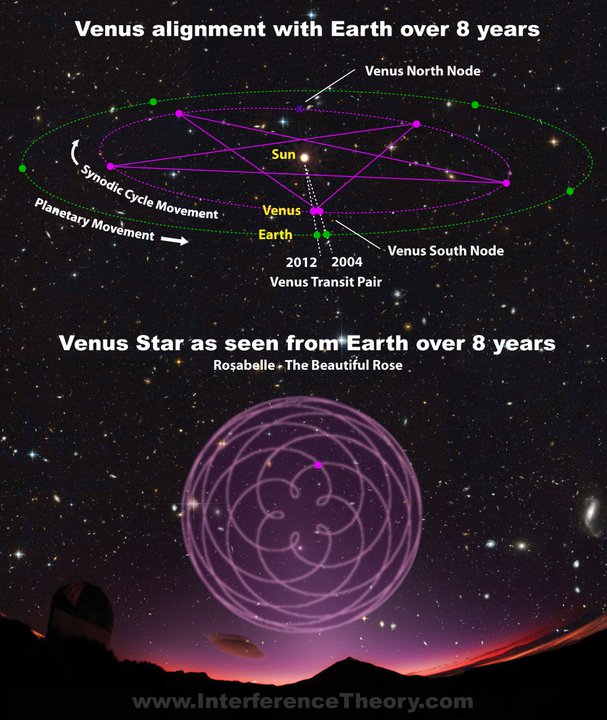The Old English Ēostre (also Ēastre) and Old High German Ôstarâ are the names of the Germanic goddess whose Anglo-Saxon month, Ēostur-monath, has given its name to the festival of Easter. Ēostur-monath is the equivalent to the month of April corresponding to Spring and fertility rites.
 In the larger historical picture, Eostre is part of a long line of dawn goddesses including the Greek Eos, Roman Aurora and Indian Ushas who were derived from the cosmological symbolism of the Sun and Venus rising together from the eastern sea. The planet Venus was thus the East Star, or ‘Easter,’ of the sunrise.
In the larger historical picture, Eostre is part of a long line of dawn goddesses including the Greek Eos, Roman Aurora and Indian Ushas who were derived from the cosmological symbolism of the Sun and Venus rising together from the eastern sea. The planet Venus was thus the East Star, or ‘Easter,’ of the sunrise.
Through this connection, Eostre descends from a long line of feminine fertility deities associated with the planet Venus, including Ishtar, Isis, Astarte, Inanna, Semiramis, Lilith, Asherah, Demeter, Hathor, Kali, Ostara, Eastre, Aphrodite and the Roman Venus. There is good evidence to believe that all of these goddesses had a common origin in the ancient Vedic fertility goddess named Vena (root ‘wenos’ or Sanskrit ‘vanas’) and her insemination by the Sun god Indra (Greek Dionysus and Cronus). The Romans, whose early Etruscan religion had roots in Vedic beliefs, apparently understood this connection very well when they renamed the Greek goddess Aphrodite to Venus.
 Within this larger historical context, the Christian celebration of Easter can be seen as an adaptation of a much more ancient fertility rite celebrating the paired movement and conjunction of Venus with the Sun. The transit of Venus across the Sun is described in the Hindu Vedas as the Sun (Indra) swallowing Venus (Shukra), spitting her out as a ‘bright’ seed or semen.* The feminine deity Vena would then compel Shukra, who resided in her ‘variegated womb,’ to give birth where the Sun’s ‘membrane of light’ touched the waters of the Earth. In this way, Vena was the Easter(n) goddess of the dawn — resurrected every morning, reborn each Spring and inseminated twice a century in rare Venus Transits — who once again brought new life to Earth.
Within this larger historical context, the Christian celebration of Easter can be seen as an adaptation of a much more ancient fertility rite celebrating the paired movement and conjunction of Venus with the Sun. The transit of Venus across the Sun is described in the Hindu Vedas as the Sun (Indra) swallowing Venus (Shukra), spitting her out as a ‘bright’ seed or semen.* The feminine deity Vena would then compel Shukra, who resided in her ‘variegated womb,’ to give birth where the Sun’s ‘membrane of light’ touched the waters of the Earth. In this way, Vena was the Easter(n) goddess of the dawn — resurrected every morning, reborn each Spring and inseminated twice a century in rare Venus Transits — who once again brought new life to Earth.
* The abduction and imprisonment of the dawn goddess, and her liberation by a heroic god slaying the dragon who imprisons her, is a central myth of Indo-European religion and descends from Vedic cosmology and hallucinogenic Soma rituals apparently connected to the Venus Transit.










